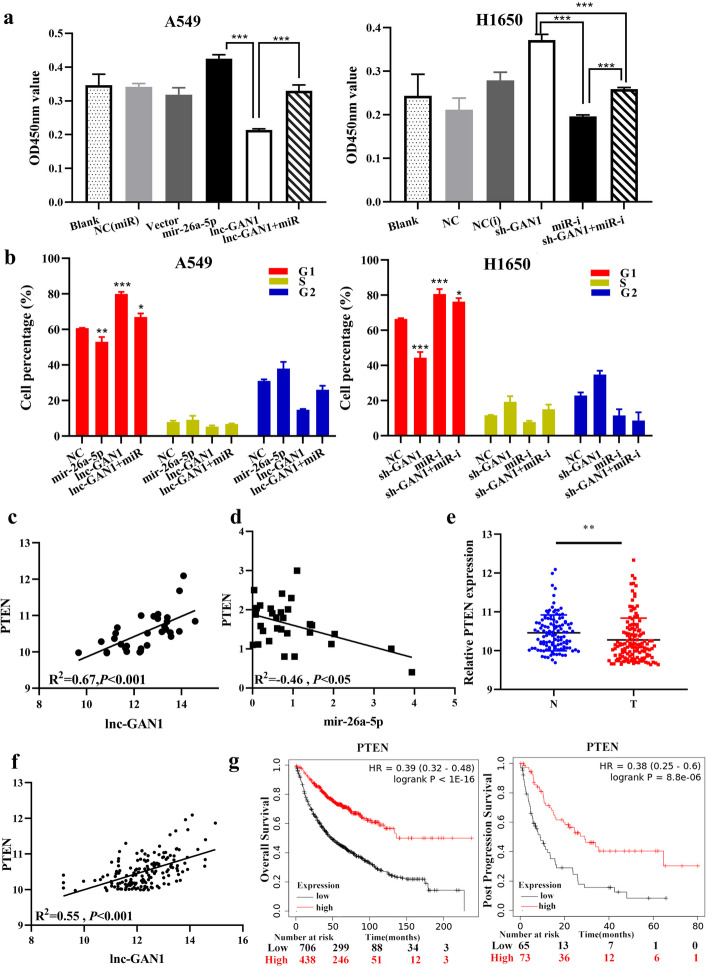Fig. 7.
lnc-GAN1 inhibits NSCLC progression by repressing miR-26a-5p to activate PTEN signaling. a miR-26a-5p overexpression alone markedly increases the cell proliferation and lnc-GAN1 overexpression alone remarkably decreases cell proliferation in A549 cells compared with blank or respective control treatments, whereas when both are overexpressed, cell proliferation is not changed; downregulation of miR-26a-5p alone or lnc-GAN1 alone or both combination produces opposite effects on cell proliferation in H1650 cells. b miR-26a-5p overexpression alone significantly promotes cell cycle progression and lnc-GAN1 overexpression alone has the reverse effect on cell cycle, whereas when both are overexpressed, the cell cycle is not changed; downregulation of miR-26a-5p alone or lnc-GAN1 alone or both combination produces opposite effects on cell cycle in H1650 cells. c There is a positive correlation between lnc-GAN1 and PTEN levels in 30 NSCLC tissues, as measured by qRT-PCR (R2 = 0.55, P < 0.05). d There is a negative correlation between PTEN and miR-26a-5p levels in 30 NSCLC tissues, as determined by qRT-PCR (R2 = − 0.46, P < 0.05). e PTEN mRNA levels in 194 NSCLC samples are significantly higher than those in 100 normal lung tissues, as measured by our custom microarray. f In TCGA database, PTEN mRNA is significantly decreased in 515 lung adenocarcinomas compared with that in 51 normal tissues (P < 0.001). g In TCGA database, NSCLC patients with high PTEN expression have significantly better overall survival (left, P < 0.001) and post progression survival (right, P < 0.001) than those with low PTEN expression

